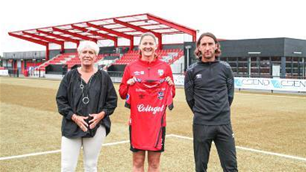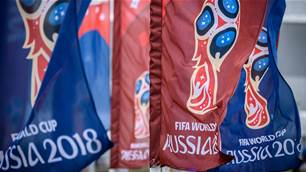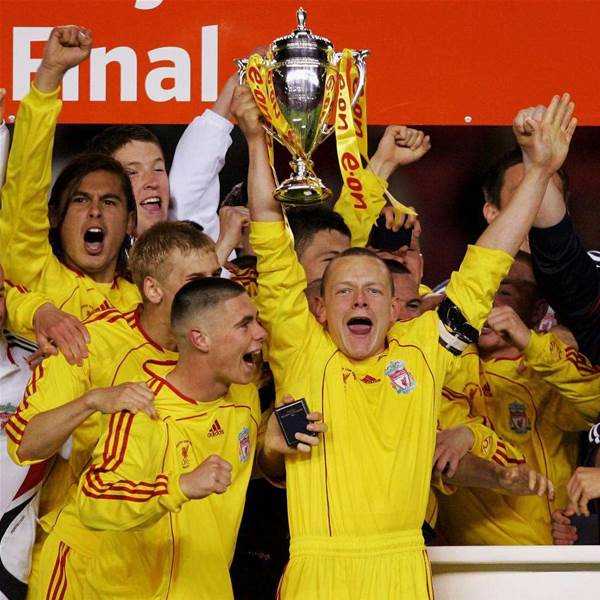In the second of our four-part series, we meet the Europeans who are leading the way in youth development.
Page 2 of 3 | Single page
One country which has managed to become world champions and play great football is France. Over the last 10 years alone, they’ve won the World Cup (1998), the European Championships (2000) and reached another World Cup Final last year. The reason is simple: they’ve moved ahead of the rest of Europe in the development of players. On matchday one of this season’s Champions League, the country with the most players in the 32 starting line-ups was Brazil with 65. Next was France with 37. Portugal had 24, Italy 22, Holland 15, Spain 15, England just 14 while there were only 12 Germans.
That France is now producing more top-quality players than any other country in Europe is largely down to George Boulogne. In 1966, he sat down with the French Football Federation and decided the national team weren’t good enough. So, in 1973, he created the French academy system that was to lay the foundations for les Bleus becoming world champions 25 years later. Along with the club academies there are now nine regional elite centres (Clairefontaine is just one), where the best players spend the week before returning to their clubs at the weekend. Club academies and regional centres are residential and incorporate full-time football coaching alongside education.
Former Monaco and Scotland midfielder John Collins believes that offering quality education at the academies is the key to ensuring unprecedented access to young footballers. “There is a lot of emphasis on education because the players live at the academies,” says the Hibs boss. “They come in at the age of 14 and it’s train, school, train, school. They are under complete
surveillance all the time so they have to work at their grades. At Monaco there were 14 classrooms within the club’s stadium.”
Over four years, between the age of 12 and 16, a French boy attending an academy receives 2304 hours of training, twice as much as in England. But it’s not just more quantity, there’s quality too. “It was Gerard Houllier’s idea to introduce what is known as ‘preformation’ training,” says Andy Roxburgh. “The idea was that between the ages of 13 and 16 most of the coaching should concentrate on individual work and developing technique. Gerard believed that if a player got to the age of 16 and his technique wasn’t up to scratch there was no way of ever catching up.”
Of course, academies aren’t the only place to play football – Johan Cruyff and George Best didn’t learnt in an academy, they learnt on the street – but cultural changes in Europe have seen street football decline for 20 years. “Marcello Lippi is always bemoaning that kids are playing far less street football today,” says Roxburgh. “In central and northern Europe we really need to try and recreate an environment where there is more spontaneity and freedom of expression with a football. They play a lot of futsal in Spain and Portugal, which is what the Brazilians do, and it’s great for the grass roots, but it’s not so big in Europe. In the past, there were plenty of kids playing in the street so there were plenty of lads to choose from. Now, though, there have to be structures in place in order to find the best players.”
Roxburgh’s favourite catchphrase is “chance or design”. As head of grass roots development for UEFA, he has to be diplomatic about who are the good, the bad and the ugly when it comes to youth development, but it doesn’t take a genius to gauge how alarmed he is about certain countries buying too many foreign players. “You can either take a chance, buy lots of players and hope they work out,” he says, “or you can do things by design and produce your own. English clubs have the money to buy players, and no restrictions on how many they can buy, so there will always be a glass ceiling for their own academy players.”
Having too much money is a lame excuse, he adds, pointing to the likes of Real Madrid, Barcelona, Lyon, Manchester United and Inter Milan as big clubs that are investing heavily in youth. “Most of the top clubs are doing it now because it’s cheaper in the long run,” he says. “Barcelona are a great example. [Lionel] Messi is Argentine, but he’s been with them since he was 12. They’ve produced [Cesc] Fabregas, Xavi, [Carlos] Puyol and [Andres] Iniesta.”
So if Holland and France have got youth development licked, what about Spain, a country, like England, with a professional league that attracts the cream of the world’s football talent?
A glance at the national youth teams’ record makes impressive reading. "La Seleccion" has won the European Under-17 championship six times, more than any other country, the UEFA Under-19 title four times and in 1999, with Iker Casillas in goal and Xavi anchoring the midfield, they claimed their first ever FIFA World Under-20 Championship.
Spain also boast one of Europe’s best youth clubs – Antiguoko. Never heard of them? Fans of Liverpool and Everton should sit up and take note, because both Xabi Alonso and Mikel Arteta are graduates of the Basque club, whose under-16s made it to the national championship play-offs this year. Up against the youth sides of Real Madrid, Barcelona and Espanyol, they eventually lost to a Valencia side which included two players who had already featured for the first team. That Antiguoko, an amateur club with no official income and no stadium, even made it that far was nothing short of miraculous. So good are they at developing players that Liverpool are trying to sign them up as their feeder club, a move which is causing a major stink in San Sebastian because for years Antiguoko have had an agreement with Real Sociedad. The system in Spain usually has one main club being fed by several smaller local clubs. The parent club pays the feeder club a “salary” and that ensures they get first pick of the best players.
“The Spanish system is pretty comprehensive,” says Englishman Phil Ball, resident of San Sebastian and author of Morbo: The Story of Spanish Football. “They combine schools football and club football, so that one weekend the kids will play with the school and a week later they will play for the local clubs. The coaching is more specialised at the clubs and the best players at the local clubs then get invited to train with the professional club, but the school and club teams are being monitored all the time so nobody can slip through the net.”
One player earning rave reviews in San Sebastian at the moment is an 11-year-old called Harry Ball, Phil’s son (“a chip off the old block” jokes Ball senior). He’s recently been invited to train with Real Sociedad. “He’s not allowed to officially play for Real until he’s 14, so until then he’ll keep
playing for his school and his local club and we’ll see what happens.”
Phil Ball was a half-decent player himself and once had trials for Lincolnshire County Schools. His experiences in Spain and England couldn’t be more different. “I found the county system in England very elitist,” says Ball. “Once you got in the team you stayed there, and that was that, really. I find it amazing that people in England are getting upset that plans for an elite academy [the FA’s national centre at Burton upon Trent] have been shelved. Why should they concentrate on a small number of top players? They should be spreading the resources throughout the regions and supporting the local clubs.”
Ball also has some interesting views on the quality of youth football in Spain compared to England and believes that when it comes to the big boys, La Liga, and not the Premiership, rules the roost. “Whenever I go back to England I watch kids of the same age as Harry and the main emphasis seems to be on running, breaking sweat and kicking the shit out of each other. It’s like the Premiership. Everybody says that because three English clubs made it to the semi-finals of the Champions League the Premiership is the best, but if you’ve got a Russian oligarch shouldn’t you be expected to make the semi-finals? For me, the best judge of whether a league has strength in depth is the UEFA Cup, where the middling teams play each other, and Spain has dominated that competition for the last two years.”
That France is now producing more top-quality players than any other country in Europe is largely down to George Boulogne. In 1966, he sat down with the French Football Federation and decided the national team weren’t good enough. So, in 1973, he created the French academy system that was to lay the foundations for les Bleus becoming world champions 25 years later. Along with the club academies there are now nine regional elite centres (Clairefontaine is just one), where the best players spend the week before returning to their clubs at the weekend. Club academies and regional centres are residential and incorporate full-time football coaching alongside education.
Former Monaco and Scotland midfielder John Collins believes that offering quality education at the academies is the key to ensuring unprecedented access to young footballers. “There is a lot of emphasis on education because the players live at the academies,” says the Hibs boss. “They come in at the age of 14 and it’s train, school, train, school. They are under complete
surveillance all the time so they have to work at their grades. At Monaco there were 14 classrooms within the club’s stadium.”
Over four years, between the age of 12 and 16, a French boy attending an academy receives 2304 hours of training, twice as much as in England. But it’s not just more quantity, there’s quality too. “It was Gerard Houllier’s idea to introduce what is known as ‘preformation’ training,” says Andy Roxburgh. “The idea was that between the ages of 13 and 16 most of the coaching should concentrate on individual work and developing technique. Gerard believed that if a player got to the age of 16 and his technique wasn’t up to scratch there was no way of ever catching up.”
Of course, academies aren’t the only place to play football – Johan Cruyff and George Best didn’t learnt in an academy, they learnt on the street – but cultural changes in Europe have seen street football decline for 20 years. “Marcello Lippi is always bemoaning that kids are playing far less street football today,” says Roxburgh. “In central and northern Europe we really need to try and recreate an environment where there is more spontaneity and freedom of expression with a football. They play a lot of futsal in Spain and Portugal, which is what the Brazilians do, and it’s great for the grass roots, but it’s not so big in Europe. In the past, there were plenty of kids playing in the street so there were plenty of lads to choose from. Now, though, there have to be structures in place in order to find the best players.”
Roxburgh’s favourite catchphrase is “chance or design”. As head of grass roots development for UEFA, he has to be diplomatic about who are the good, the bad and the ugly when it comes to youth development, but it doesn’t take a genius to gauge how alarmed he is about certain countries buying too many foreign players. “You can either take a chance, buy lots of players and hope they work out,” he says, “or you can do things by design and produce your own. English clubs have the money to buy players, and no restrictions on how many they can buy, so there will always be a glass ceiling for their own academy players.”
Having too much money is a lame excuse, he adds, pointing to the likes of Real Madrid, Barcelona, Lyon, Manchester United and Inter Milan as big clubs that are investing heavily in youth. “Most of the top clubs are doing it now because it’s cheaper in the long run,” he says. “Barcelona are a great example. [Lionel] Messi is Argentine, but he’s been with them since he was 12. They’ve produced [Cesc] Fabregas, Xavi, [Carlos] Puyol and [Andres] Iniesta.”
So if Holland and France have got youth development licked, what about Spain, a country, like England, with a professional league that attracts the cream of the world’s football talent?
A glance at the national youth teams’ record makes impressive reading. "La Seleccion" has won the European Under-17 championship six times, more than any other country, the UEFA Under-19 title four times and in 1999, with Iker Casillas in goal and Xavi anchoring the midfield, they claimed their first ever FIFA World Under-20 Championship.
Spain also boast one of Europe’s best youth clubs – Antiguoko. Never heard of them? Fans of Liverpool and Everton should sit up and take note, because both Xabi Alonso and Mikel Arteta are graduates of the Basque club, whose under-16s made it to the national championship play-offs this year. Up against the youth sides of Real Madrid, Barcelona and Espanyol, they eventually lost to a Valencia side which included two players who had already featured for the first team. That Antiguoko, an amateur club with no official income and no stadium, even made it that far was nothing short of miraculous. So good are they at developing players that Liverpool are trying to sign them up as their feeder club, a move which is causing a major stink in San Sebastian because for years Antiguoko have had an agreement with Real Sociedad. The system in Spain usually has one main club being fed by several smaller local clubs. The parent club pays the feeder club a “salary” and that ensures they get first pick of the best players.
“The Spanish system is pretty comprehensive,” says Englishman Phil Ball, resident of San Sebastian and author of Morbo: The Story of Spanish Football. “They combine schools football and club football, so that one weekend the kids will play with the school and a week later they will play for the local clubs. The coaching is more specialised at the clubs and the best players at the local clubs then get invited to train with the professional club, but the school and club teams are being monitored all the time so nobody can slip through the net.”
One player earning rave reviews in San Sebastian at the moment is an 11-year-old called Harry Ball, Phil’s son (“a chip off the old block” jokes Ball senior). He’s recently been invited to train with Real Sociedad. “He’s not allowed to officially play for Real until he’s 14, so until then he’ll keep
playing for his school and his local club and we’ll see what happens.”
Phil Ball was a half-decent player himself and once had trials for Lincolnshire County Schools. His experiences in Spain and England couldn’t be more different. “I found the county system in England very elitist,” says Ball. “Once you got in the team you stayed there, and that was that, really. I find it amazing that people in England are getting upset that plans for an elite academy [the FA’s national centre at Burton upon Trent] have been shelved. Why should they concentrate on a small number of top players? They should be spreading the resources throughout the regions and supporting the local clubs.”
Ball also has some interesting views on the quality of youth football in Spain compared to England and believes that when it comes to the big boys, La Liga, and not the Premiership, rules the roost. “Whenever I go back to England I watch kids of the same age as Harry and the main emphasis seems to be on running, breaking sweat and kicking the shit out of each other. It’s like the Premiership. Everybody says that because three English clubs made it to the semi-finals of the Champions League the Premiership is the best, but if you’ve got a Russian oligarch shouldn’t you be expected to make the semi-finals? For me, the best judge of whether a league has strength in depth is the UEFA Cup, where the middling teams play each other, and Spain has dominated that competition for the last two years.”
Related Articles

Agent taking Aussies to Europe says 'doom and gloom' unfounded

Matildas veteran seals French move













